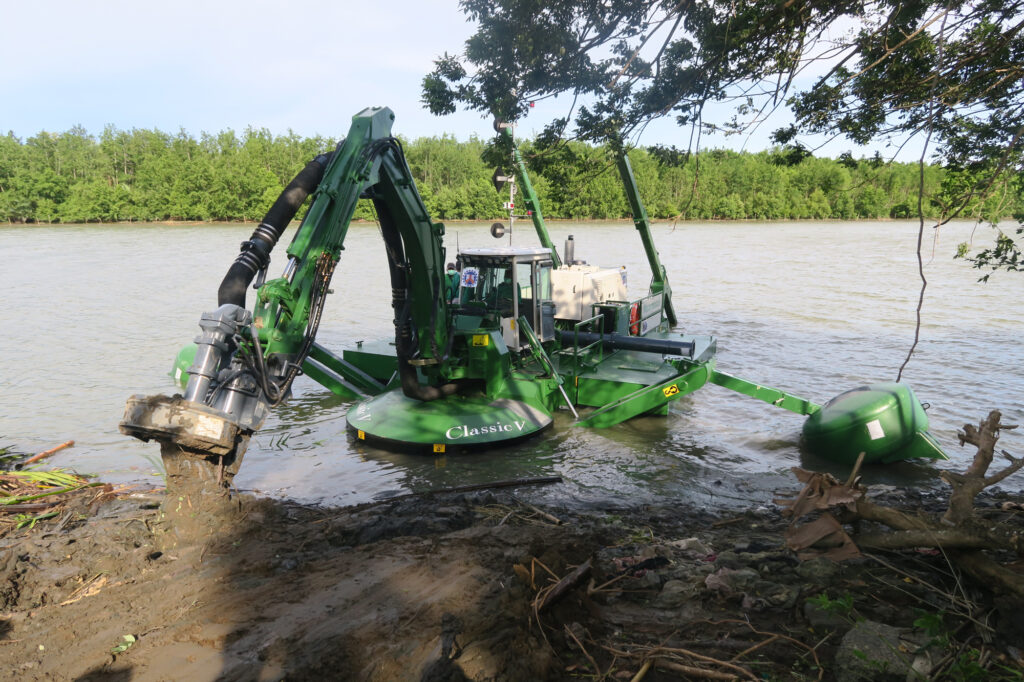
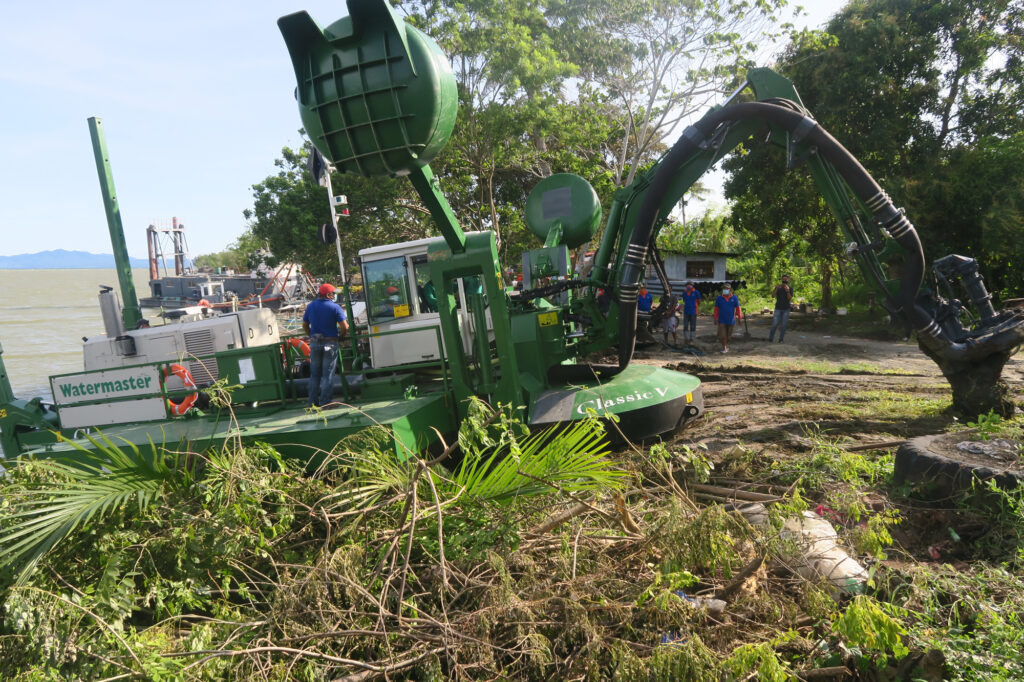
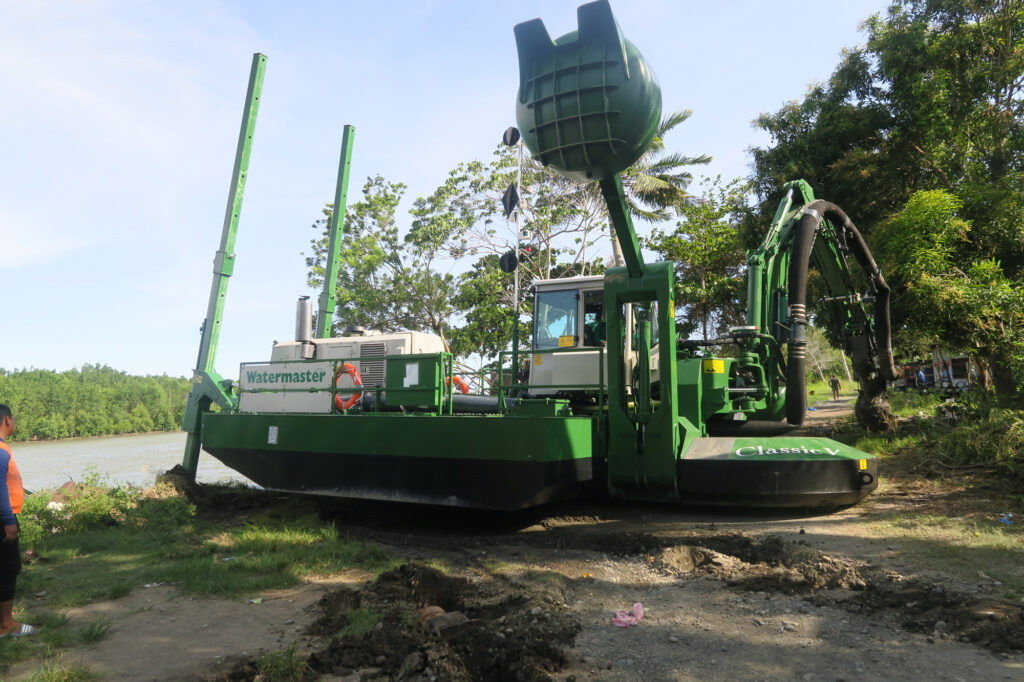
The Department of Public Works and Highways (DPWH) of the Philippine Government is responsible for providing and managing quality infrastructure facilities and services for the Filipino people. DPWH utilises a fleet of Watermaster dredgers to help prevent floods and to keep the shallow waterways fully operational.
Briefly
- The Philippines suffers from perennial flooding
- The Government body “DPWH” uses a fleet of 21 Watermasters to help mitigate floods
- Results have been good and the work continues
- There are all together 25 Watermasters improving the Philippine waterways
With over a hundred million citizens, the Philippines is one of the most populous countries in the world. It is a mountainous archipelago composed of over 7500 islands. The Country is located in a seismically and volcanically active tropical region prone to a range of natural hazards, including earthquakes, volcano eruptions, typhoons and perennial floods.
In 1991 on the island of Luzon, the Mount Pinatubo volcano erupted violently, ejecting enormous amounts of ash, magma and sulfuric acid into the air. The disaster caused hundreds of casualties and massive damage to the surrounding areas. In the eruption aftermath the Watermaster concept was first introduced to DPWH. They were searching for machinery that could operate in the ash-filled shallow rivers. Watermaster’s unique mobility convinced the department to try a new kind of approach.
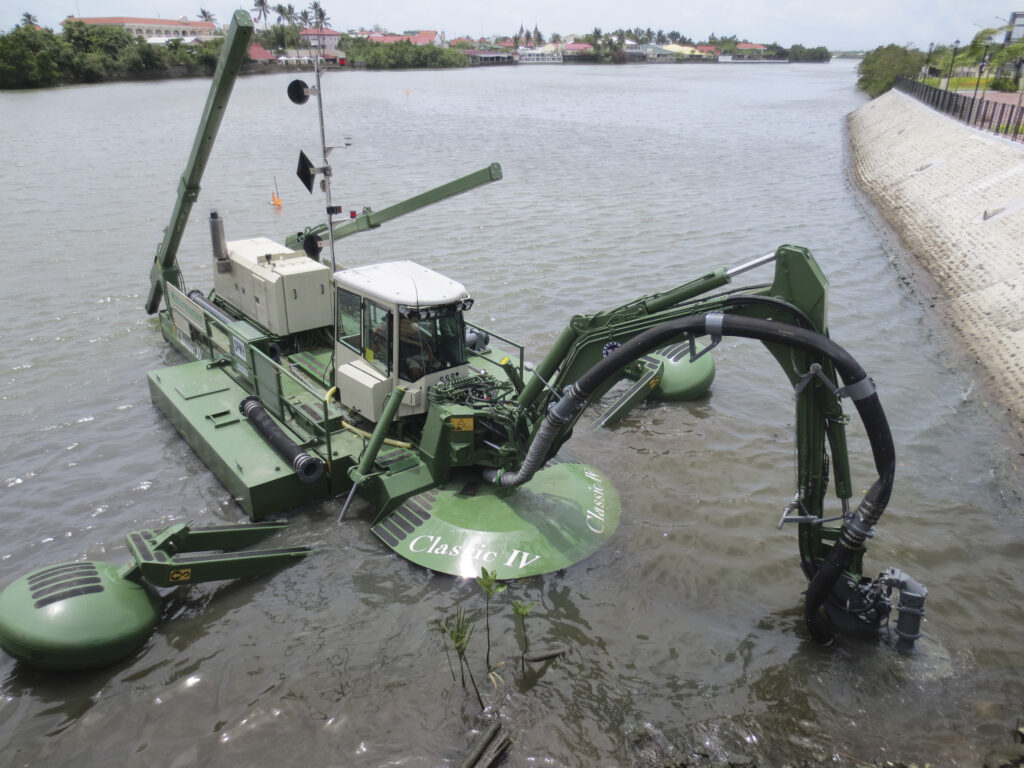
The new complements the old
DPWH had been implementing river dredging since the 1950’s. They already owned an arsenal of dredgers, but their conventional cutter suction dredgers are not amphibious and thus unable to work in the shallow waters between 0 to 2 meters depth. Their engine cooling system requires plenty of fresh water, which was a problem in the muddy waters that occur in the rainy season and made the engines overheat repeatedly.
The conventional dredgers require assisting vessels, separate anchors and wire-cables in their dredging process. Their work angle is limited to roughly 35-70 degrees and they need to reposition the machine and anchors often, reducing the effective work hours per day. The transportation of the vessels is slow and expensive, which is why they rarely change sites. They need assembling at the site and a crane to enter and exit water. The conventional dredgers are, however, well-suited for long-lasting projects in big rivers and deep waters, where they can fully make use of their big pumping capacity.


DPWH also operates a number of long-reach excavators, but these machines can only work from the shores, not from the water. Urban riverbanks are often packed with formal or informal housing, restricting excavators’ access to the worksites.
Watermaster was the missing link that complemented their existing machinery – a multipurpose amphibious machine that can reach the difficult shallow water sites and carry out all work needed there.
Watermaster operates independently without assisting vessels, separate anchors and wire-cables. The machine is self-propelled and the work attachments (such as the Cutter Pump) are connected to the flexible excavator arm, enabling cable-less working on a wide 180 degrees angle. Watermaster repositions itself quickly using its integrated stabilizers so almost the entire operational time goes to effective work. The air-cooled Caterpillar engine does not require outside water for cooling so Watermaster can operate without overheating even on dry land.
Three Watermasters were delivered to DPWH in 2001-2002 for the Pinatubo eruption clean-up work. DPWH soon noticed that they could utilise versatile Watermasters on a wider scale.

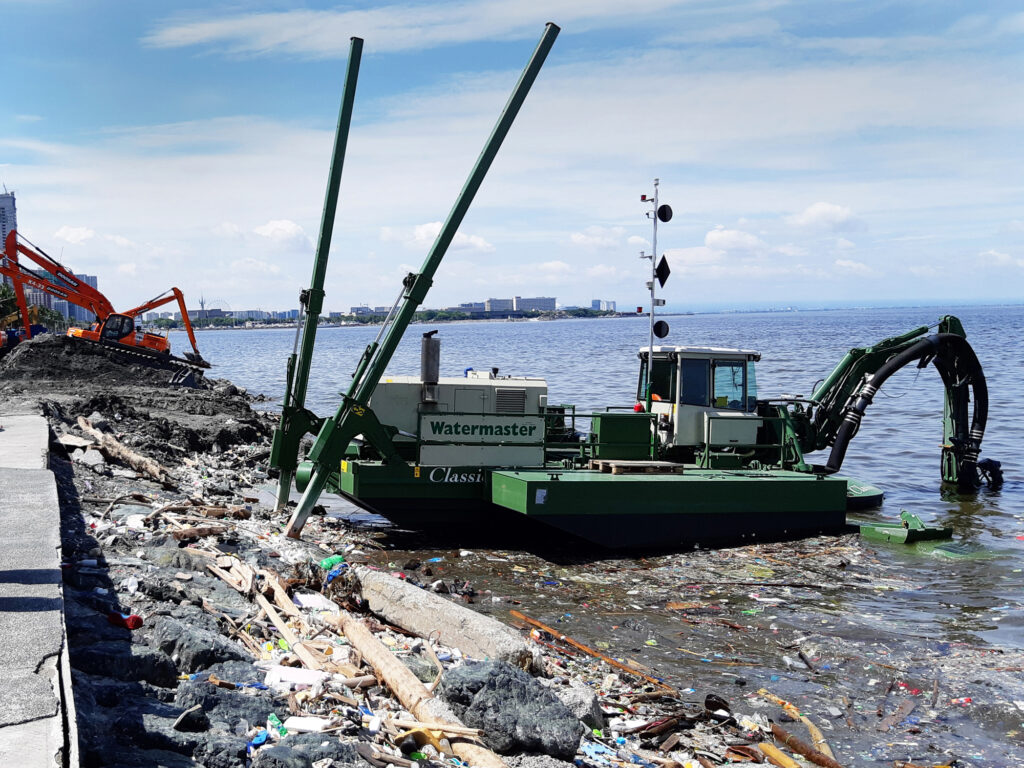
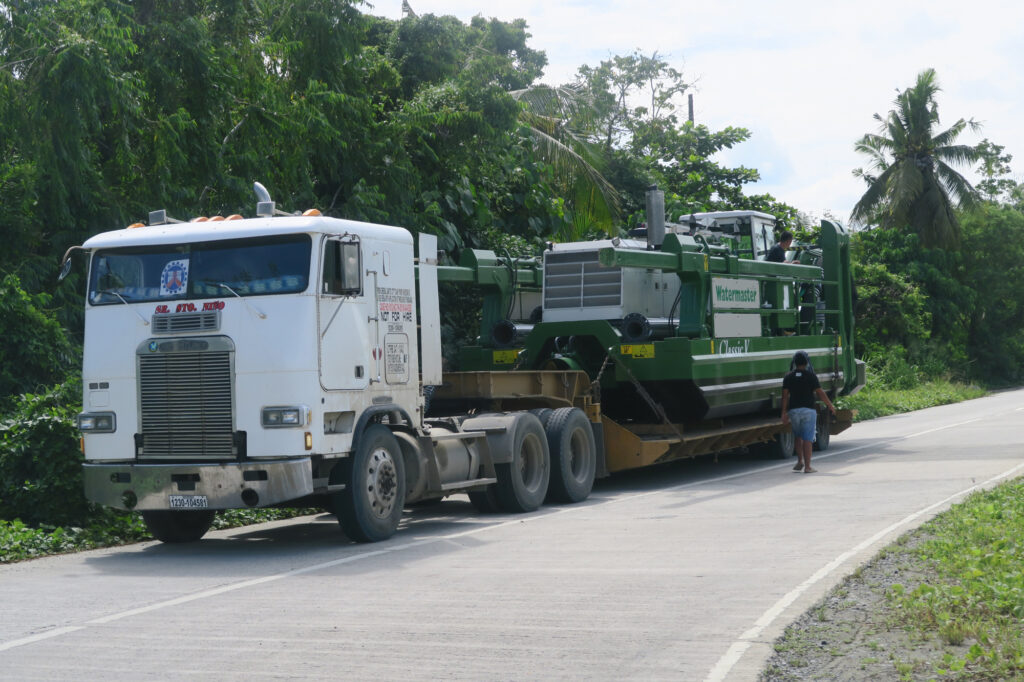
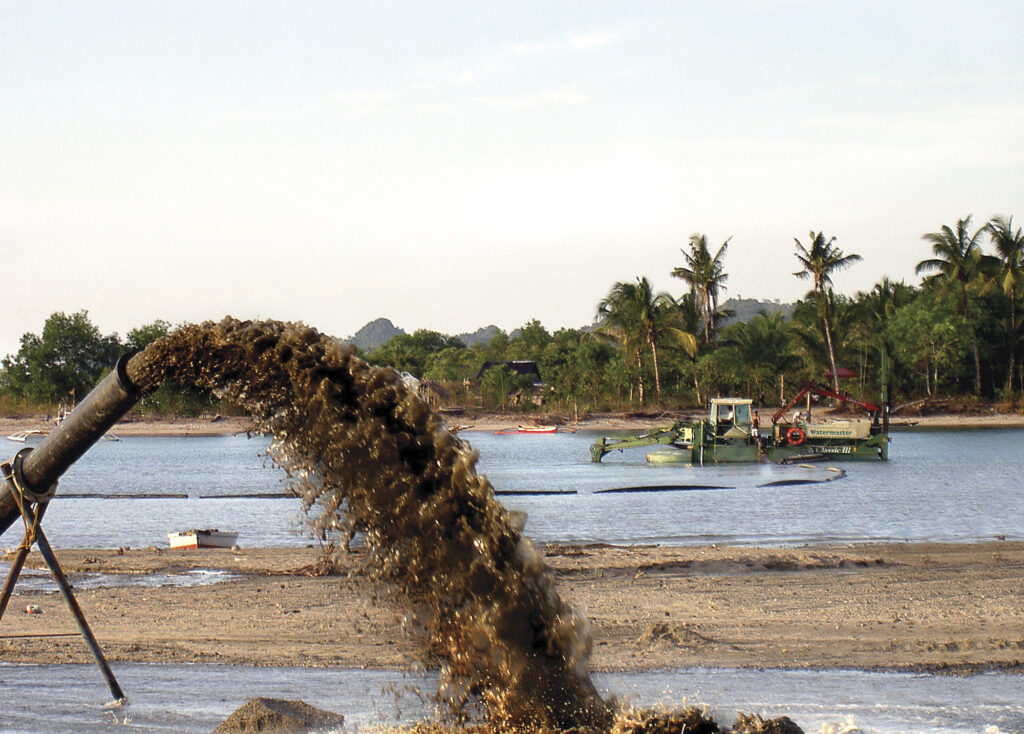
Fighting floods
The Philippines has suffered several serious floods in the recent past, causing hundreds of deaths and financial losses totalling billions of Euros. Millions of people have been affected by these disasters.
The main reason for the flooding is that many of the inland waterways are filled with sediments and trash due to upstream erosion and the dumping of waste in the river systems, leading to a reduced water carrying capacity. The narrow, silted urban canals are especially vulnerable to flooding during heavy rainfalls of the typhoon season (from May to October).
DPWH’s goal is to transform the flood prone areas to flood protected areas by increasing the water carrying capacity of the waterways. They do this by dredging the accumulated silt, by removing all trash and vegetation that disturb the free flow of water and by strengthening and raising the riverbanks where necessary. The multipurpose Watermaster can handle all these operations.
The depth of the Philippine waterways varies significantly between the dry and the rainy season, leaving some of them almost completely waterless during the dry season drought. The conventional dredgers could not work there year-round due to this periodic lack of water.
Convinced of Watermaster’s versatility, DPWH has reinforced their Watermaster fleet on several occasions between 2004-2014. Ten new units were delivered to DPWH two years ago and were immediately put to fight floods in the Dagupan, Olangapo, Balanga, Sasmuan, Iloilo, Tacloban, Kawit, Cabagan, Paoay and Cantillan city areas. Currently DPWH has 21 Watermasters.
The work continues
DPWH has achieved great results with the Watermaster fleet, but the work is continuous and far from over. The Philippines’ location in the Pacific Ring of Fire and the Pacific typhoon belt will undoubtedly keep the need for mobile and versatile dredging high in the future, too. Dredging is a necessity required to help protect the Philippine people who live in the vulnerable low-lying areas of the country.
The amphibious multipurpose Watermaster dredgers are widely utilised in flood prevention works around the world, including Indonesia, India, Ghana, Zambia, South Africa, Venezuela, Colombia and Russia.
The Philippines is located in the disaster prone Pacific Ring of Fire and Pacific Typhoon belt.
Active waterway maintenance reduces the vulnerability to floods and secures the flow of people, goods and services, thus boosting the economy.
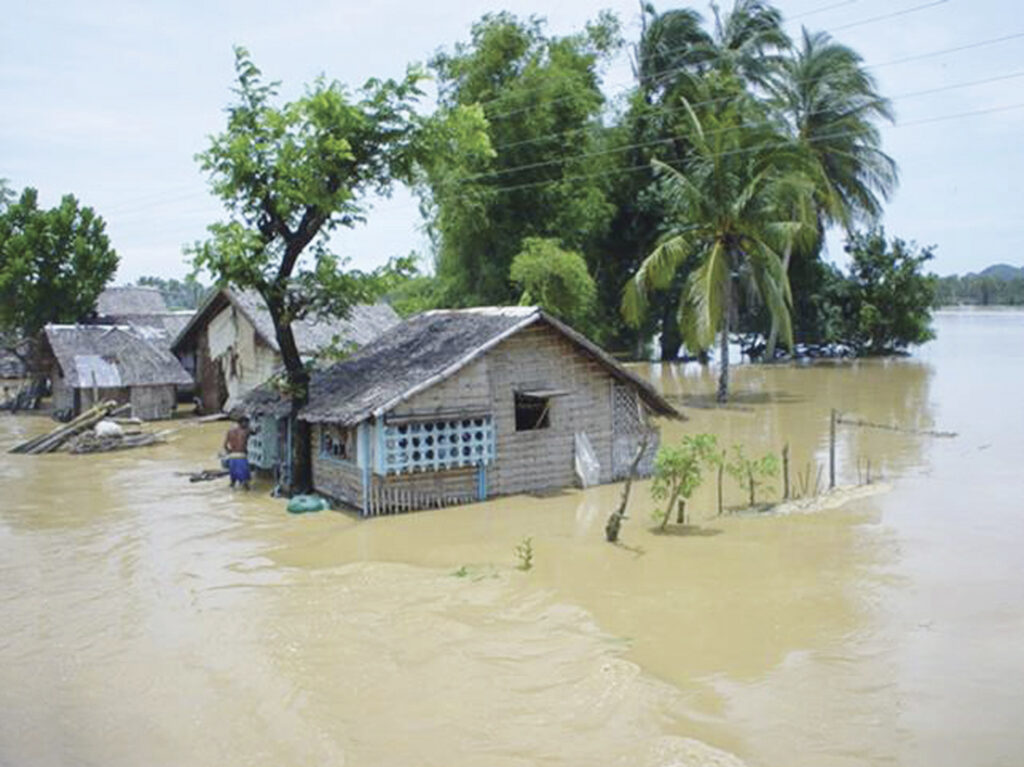
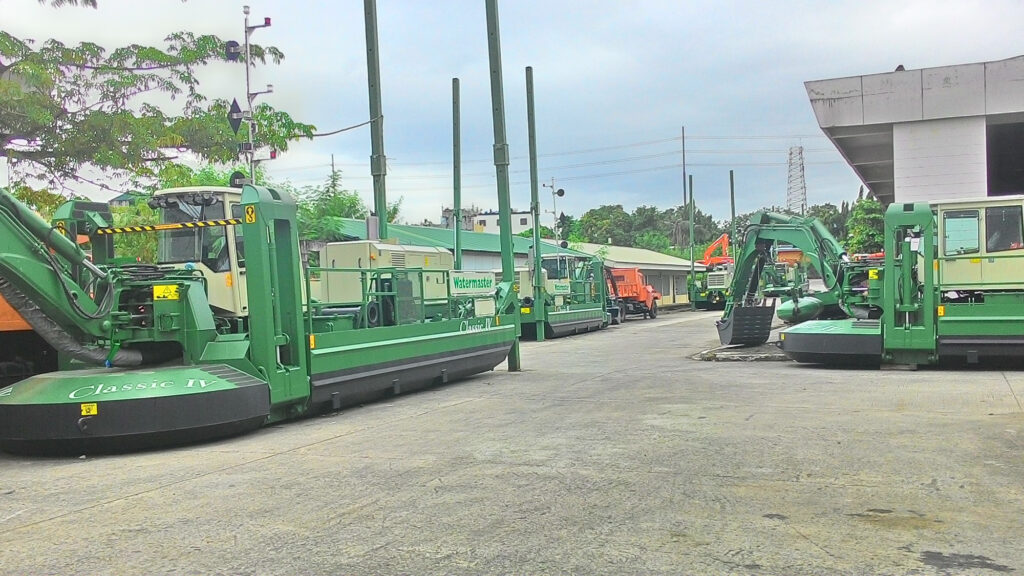
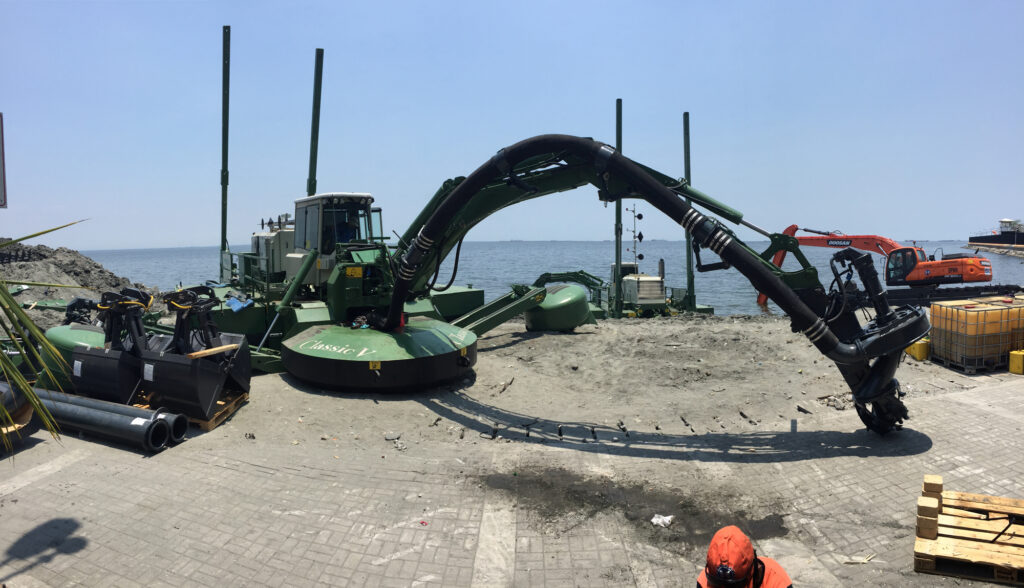
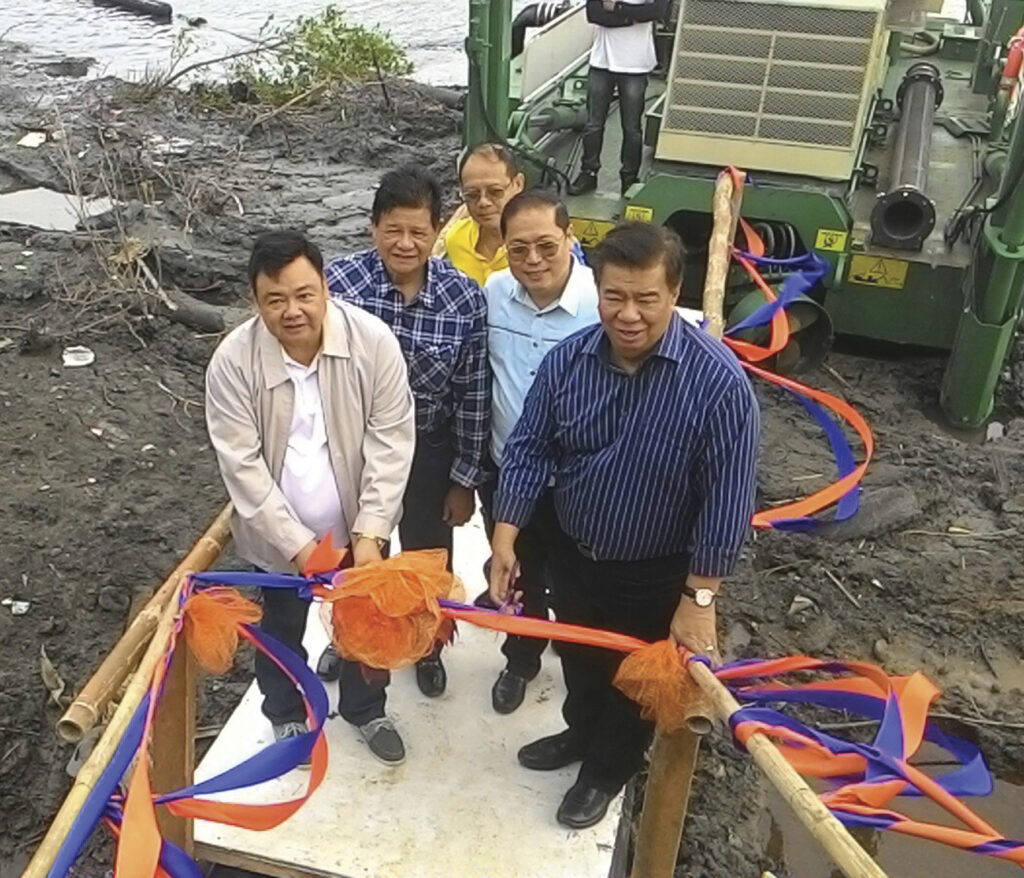

GALLERY





